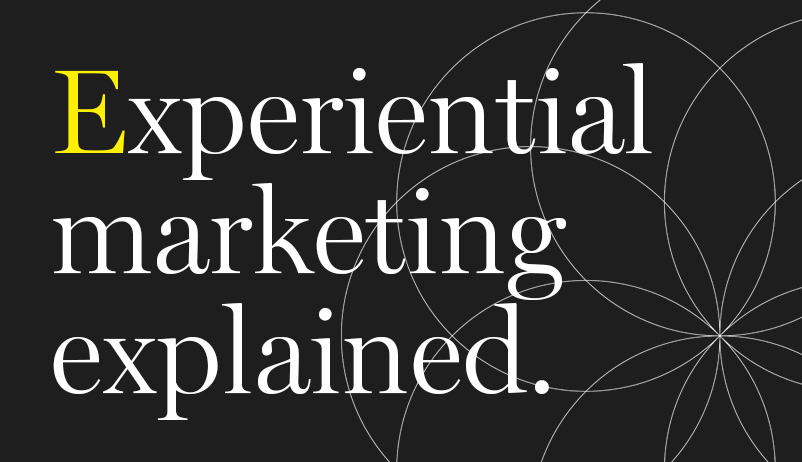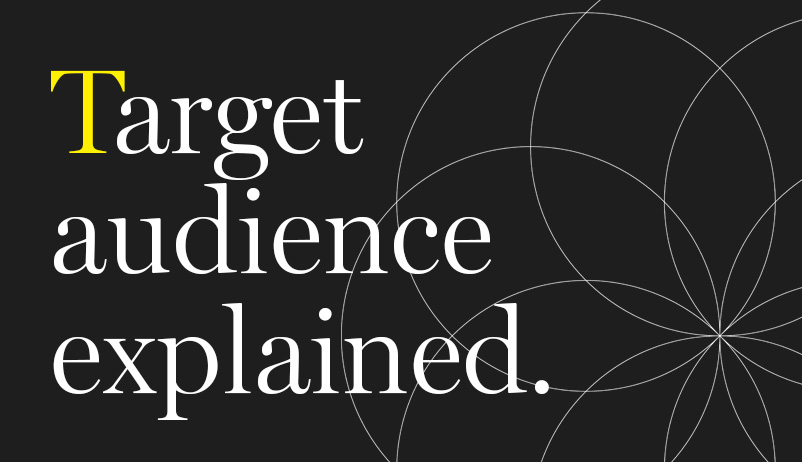

Experiential Marketing
Experiential Marketing
What Is Experiential Marketing?
Lorem ipsum dolor sit amet, consectetur adipiscing elit. Suspendisse varius enim in eros elementum tristique. Duis cursus, mi quis viverra ornare, eros dolor interdum nulla, ut commodo diam libero vitae erat. Aenean faucibus nibh et justo cursus id rutrum lorem imperdiet. Nunc ut sem vitae risus tristique posuere.
What Does Experiential Marketing Mean?
Experiential marketing is a strategy that focuses on creating immersive and memorable experiences for consumers to engage with a brand. It involves designing interactive and participatory experiences that allow consumers to directly interact with products, services, or brand elements. The goal is to establish a deep emotional connection with the audience, leaving a lasting impression and fostering brand loyalty. Examples of experiential marketing include pop-up events, interactive installations, product demonstrations, live performances, and brand activations at festivals or trade shows.
What Are Common Types of Experiential Marketing.
Experiential marketing employs various strategies to create engaging and memorable live experiences for consumers. Here are some common experiential marketing strategies:
- Pop-Up Live Events: Temporary physical spaces, often in unexpected locations, where brands can showcase their products or services, create interactive experiences, and engage with their target audience directly.
- Brand Activations: Interactive experiences designed to activate and engage consumers, typically at events, festivals, or high-traffic locations. These activations can include games, contests, product demonstrations, or immersive installations.
- Immersive Installations: Creating immersive environments or installations that allow consumers to step into the brand's world. This can involve virtual reality (VR) experiences, augmented reality (AR) interactions, or interactive displays.
- Product Sampling: Providing consumers with the opportunity to try out or experience a product first-hand. This could include offering samples, hosting product demos, or organising test drive events.
- Influencer Collaborations: Partnering with influencers or key opinion leaders to promote and showcase the brand through experiential activities. This can involve influencers attending events, sharing their experiences on social media, or hosting branded experiences.
- Guerrilla Marketing Campaigns: Unconventional and unexpected marketing activations that capture attention and generate buzz. These can include flash mobs, street performances, or interactive stunts that surprise and engage passers-by.
- Interactive Technology: Utilising technology to create interactive experiences that engage consumers. This can involve touchscreen displays, interactive kiosks, virtual reality experiences, or mobile apps that allow users to interact with the brand.
- Branded Events and Sponsorships: Hosting or sponsoring events that align with the brand's values and target audience. This provides an opportunity to engage with consumers in a relevant context and create memorable experiences.
- Gamification: Incorporating elements of gaming into brand experiences to drive engagement and participation. This can involve creating interactive games, challenges, or competitions that encourage consumers to interact with the brand.
- Social Media Integration: Encouraging consumers to share their experiences on social media platforms through interactive photo opportunities, hashtags, or user-generated content campaigns. This amplifies the reach and impact of the experiential marketing activities.
These strategies are not mutually exclusive and can be combined or tailored to suit the specific objectives, target audience, and industry of a brand. The key is to create immersive, interactive, and memorable experiences that connect with consumers on an emotional level, fostering brand loyalty and advocacy.

"Experiential marketing creates immersive, interactive experiences that connect with consumers on an emotional level, fostering brand loyalty. It differentiates brands, builds authentic relationships, and generates word-of-mouth marketing for a competitive advantage."
Paul Mills
Founder, VCMO
How To Create an Experiential Marketing Campaign.
Creating an experiential marketing campaign involves careful planning, creativity, and strategic execution. Here are the key steps to create an effective experiential marketing campaign:
- Set Clear Objectives: Define the objectives of your campaign. Are you aiming to increase brand awareness, drive product trial, or enhance customer engagement? Clearly articulate what you want to achieve to guide the campaign's direction.
- Understand Your Audience: Conduct thorough research to understand your target audience's preferences, behaviours, and interests. This will help you tailor the experience to resonate with them and create a lasting impact.
- Develop a Concept: Brainstorm creative ideas that align with your objectives and target audience. Consider how you can create an immersive, interactive, and memorable experience that connects with your brand values and messaging.
- Design Engaging Experiences: Determine the key elements that will make your experiential marketing campaign engaging. Consider interactive installations, sensory experiences, technology integration, gamification, or live performances that align with your concept.
- Choose the Right Venue or Platform: Select a location or platform that allows you to reach your target audience effectively. It could be a physical space, a festival, a trade show, or a digital platform, depending on your target audience's preferences and your campaign goals.
- Plan Logistics: Outline the logistical requirements of your campaign, including budget, staffing, permits, equipment, and any necessary partnerships or collaborations. Ensure all logistical elements are organised to execute the campaign smoothly – and safely!
- Integrate Branding: Infuse your brand's identity and messaging throughout the experience. Use visual elements, live streams, brand ambassadors, branded materials, and consistent messaging to reinforce your brand and create a cohesive experience.
- Promote Your Campaign: Develop a comprehensive marketing and promotion plan to generate awareness and build anticipation for your experiential marketing campaign. Utilise social media marketing, email marketing, promo videos, PR efforts, influencers, and traditional advertising to reach your target audience.
- Measure and Analyse: Establish key performance indicators (KPIs) to measure the success of your campaign. Track metrics such as foot traffic, engagement levels, social media reach, leads generated, or sales uplift to evaluate the impact of the campaign and gather insights for future improvements.
- Follow Up and Maintain Engagement: Continue engaging with your audience after the campaign ends. Nurture leads, collect feedback, encourage user-generated content, and maintain communication to sustain the relationship and capitalise on the momentum created by the experiential campaign.
Remember, each experiential marketing campaign should be tailored to your brand, target audience, and specific objectives. It should deliver a unique and memorable experience that resonates with your target audience and leaves a positive and lasting impression of your brand.

Why Is Experiential Marketing Important?
Experiential marketing goes beyond traditional advertising methods by creating memorable and interactive experiences that leave a lasting impact on consumers. It helps build stronger brand relationships, drives customer loyalty, and differentiates brands in a competitive market. Experiential marketing is important for several reasons, including:
- Engaging and Memorable Experiences: Experiential marketing allows brands to create immersive and interactive experiences that engage consumers on a deeper level. By providing memorable and positive experiences, brands can foster emotional connections, which are more likely to result in brand loyalty and advocacy.
- Differentiation and Competitive Advantage: In today's crowded marketplace, brands need to stand out from the competition. Experiential marketing offers a unique opportunity to differentiate by creating experiences that are distinct, memorable, and aligned with the brand's values. It helps brands break through the clutter and leave a lasting impression on consumers.
- Building Authentic Relationships: Experiential marketing enables brands to directly interact with their target audience. It provides an opportunity to build authentic relationships by allowing consumers to experience the brand first-hand and engage in meaningful conversations. This helps in establishing trust, credibility, and long-term customer loyalty.
- Emotional Connection and Brand Recall: Experiences have a powerful impact on human emotions and memory. Experiential marketing leverages this by creating positive emotional associations with the brand. When consumers have a memorable and positive experience, they are more likely to remember the brand and recall it when making purchasing decisions.
- Word-of-Mouth Marketing: Engaging experiences are highly shareable, both online and offline. Experiential marketing campaigns often generate buzz, encourage user-generated content, and stimulate word-of-mouth marketing. When consumers have a remarkable experience, they are more likely to share it with their friends, family, and social media networks, amplifying the reach and impact of the campaign.
- Product Education and Trial: Experiential marketing provides an opportunity to showcase product features, benefits, and functionality in a hands-on manner. It allows consumers to experience the product first-hand, leading to better understanding and increased likelihood of trial or purchase.
- Targeted Audience Engagement: Experiential marketing allows brands to directly engage with their target audience in a controlled environment. By selecting the right venue or platform, brands can reach a specific demographic, interest group, or niche market. This targeted engagement increases the chances of reaching the right people with the right message.
- Data and Insights: Experiential marketing campaigns can generate valuable data and insights about consumer behaviour, preferences, and feedback. By collecting and analysing this data, brands can gain a deeper understanding of their audience, refine their marketing strategies, and make data-driven decisions for future campaigns.
Examples of Experiential Marketing.
Here are two real-life examples of experiential marketing campaigns:
Red Bull Stratos:
Red Bull, an energy drink company, executed an extraordinary experiential marketing campaign called Red Bull Stratos. In 2012, they sponsored Austrian skydiver Felix Baumgartner's record-breaking freefall from the stratosphere. The event involved a live broadcast of Baumgartner ascending to the edge of space in a helium balloon and then jumping back to Earth. It was a highly immersive and captivating experience that generated widespread media coverage and social media buzz. The campaign not only showcased Red Bull's brand values of adventure and adrenaline but also engaged millions of viewers around the world who followed the event, creating a memorable experience and reinforcing Red Bull's association with extreme sports.
IKEA Sleepover:
IKEA, the Swedish furniture retailer, organized an experiential marketing campaign in 2018 called "IKEA Sleepover" in Sydney, Australia. They transformed one of their stores into a sleepover experience where selected customers could spend the night. The campaign aimed to promote IKEA's bedroom furniture and highlight the importance of a good night's sleep. Participants were treated to various activities, such as personal sleep consultations, yoga classes, and bedtime stories, all taking place within a stylishly decorated IKEA showroom. The event created a unique and memorable experience, generating significant media attention and social media buzz. It allowed IKEA to showcase their products in a real-life setting while creating a sense of excitement and exclusivity among participants.
These examples demonstrate how experiential marketing campaigns can go beyond traditional advertising and create immersive, memorable, and engaging experiences that align with the brand's values, generate buzz, and foster a strong emotional connection with the audience.
Disadvantages of Experiential Marketing.
While experiential marketing offers many benefits, there are also potential disadvantages to consider:
High Costs
Creating and executing experiential marketing campaigns can be costly. From designing immersive experiences to renting venues, hiring staff, and incorporating technology, the expenses can add up quickly. For smaller businesses with limited budgets, it may be challenging to invest significant resources into such campaigns.
Limited Reach
Experiential marketing campaigns often target a specific location or event, which can restrict their reach. While they can generate buzz and engagement among attendees, they may not reach a broader audience or have a sustained impact beyond the duration of the campaign. This limitation can be a drawback for brands seeking widespread exposure or targeting a larger customer base.
Difficult Measurement
Measuring the effectiveness and return on investment (ROI) of experiential marketing campaigns can be challenging. Unlike digital marketing channels, where metrics like click-through rates and conversions can be easily tracked, assessing the impact of experiential campaigns requires more qualitative and subjective measurements. Gathering data on brand perception, customer sentiment, and long-term behaviour changes can be complex, making it harder to evaluate the campaign's success.
Resource Intensive
Experiential marketing campaigns require significant planning, coordination, and execution. They demand time, manpower, and expertise to create and manage the experiences effectively. Brands need to allocate dedicated resources and expertise to ensure seamless execution, which can be a strain on internal teams or require outsourcing to specialised agencies.
Lack of Control
Experiential marketing campaigns involve direct consumer interactions, which can introduce an element of unpredictability. Despite careful planning, there is always a risk that unforeseen circumstances or consumer reactions may impact the desired experience or messaging. Brands need to be prepared to adapt and handle potential challenges in real-time.
Short-Term Impact
While experiential marketing can create a memorable and engaging experience, the impact may be relatively short-lived. The excitement and buzz generated during the campaign period may fade over time, especially if there is no follow-up strategy to sustain the momentum. Brands should consider how to capitalize on the initial engagement and convert it into long-term customer relationships.
Target Audience Limitations
Experiential marketing campaigns may not effectively reach certain target audiences. For example, if the campaign is location-specific or requires physical attendance, it may exclude individuals who are unable to participate due to geographical constraints, accessibility issues, or other limitations. Brands need to ensure their target audience aligns with the campaign's reach and engagement potential.
Despite these potential disadvantages, experiential marketing, when strategically planned and executed, can be a powerful tool to create meaningful connections with consumers, drive brand loyalty, and generate positive brand associations. Brands should carefully assess their objectives, target audience, resources, and overall marketing strategy to determine if experiential marketing aligns with their goals and fits within their broader marketing mix.
Recap on Experiential Marketing.
Experiential marketing is a powerful marketing strategy that can help brands to build stronger connections with consumers by creating memorable and engaging experiences. While there are some potential drawbacks to this type of marketing, the benefits are clear - increased brand awareness, greater engagement, improved customer loyalty, and higher sales. Brands that are looking to differentiate themselves in a crowded marketplace and build long-term relationships with consumers should consider incorporating experiential marketing into their overall marketing strategy.
About VCMO
VCMO is a UK-based provider of fractional marketing services, supporting B2B SMEs—ranging from funded scale-ups to mid-tier and private equity-backed businesses—through key moments of growth and transformation. Its Chartered Fractional CMOs and SOSTAC® certified planners embed strategic marketing leadership into organisations navigating product launches, new market entry, acquisitions, and leadership gaps.
Ready to take your marketing to the next level? Let us help you get there.
Subscribe to Our Newsletter
Fractional Edge is our montly newsletter sharing expert opinion on the latest trends in fractional leadership, curated marketing content from leading sources, VCMO events, and much more. Subscribing is quick — just add your name and email.







